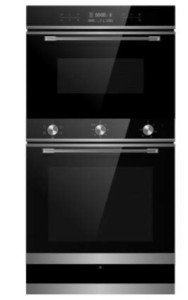The Ultimate Guide to Buying a Built-In Oven
In the realm of modern-day cooking appliances, built-in ovens stand out for their smooth combination into kitchen cabinets, visual appeal, and advanced cooking innovations. They provide a plethora of features and a structured style, catering to both culinary enthusiasts and everyday cooks. Nevertheless, picking the right built-in oven can be complicated given the multitude of choices available in the market. This article works as a detailed guide, highlighting key considerations when purchasing a built-in oven, popular functions, and answers to regularly asked concerns (FAQs).
Why Choose a Built-In Oven?
Built-in ovens offer various benefits, including:
- Space Efficiency: They are created to fit into existing cabinets, enhancing kitchen space.
- Visual Appeal: With a range of designs and surfaces, built-in ovens boost the general appearance of a kitchen.
- Advanced Features: Many come equipped with modern innovation, making cooking simpler and more accurate.
- Personalization: Built-in ovens can be installed at eye level or below counter height, providing flexibility based on personal preference.
Key Considerations When Buying a Built-In Oven
Here are very important elements to think about before purchasing:
1. Size and Dimensions
Before picking a built-in oven, it is vital to measure the available area. Standard built-in ovens normally fall under 2 primary categories:
| Oven Size | External Dimensions | Internal Capacity |
|---|---|---|
| Single | 24-30 inches wide | 3-5 cubic feet |
| Double | 30-36 inches broad | 5-10 cubic feet |
Ensure that the picked model fits your cabinets both in width and height.
2. Kind of Oven
Built-in ovens been available in different types, consisting of:
- Conventional Ovens: Uses heating components above and listed below for standard baking and roasting.
- Convection Ovens: Employs a fan to flow hot air, supplying even cooking.
- Wall Ovens: Installed vertically at eye level for easier access.
- Steam Ovens: Uses steam to prepare food, preserving nutrients and moisture.
3. Fuel Type
Built-in ovens are readily available in different fuel types:
- Electric: Often warms more uniformly, ideal for baking.
- Gas: Offers instant temperature control, fantastic for roasting and broiling.
- Dual Fuel: Combines the best of both worlds with a gas cooktop and electric oven.
4. Functions and Technology
Modern built-in ovens come with a myriad of functions that enhance the cooking experience:
- Smart Technology: WiFi-enabled designs enable users to manage the oven remotely via an app.
- Self-Cleaning: Reduces the effort needed to maintain a tidy oven.
- Postpone Start: Lets you configure the oven to begin cooking at a fixed time.
- Numerous Cooking Modes: Options for baking, broiling, roasting, and more.
5. Brand and Price
Picking a trusted brand can ensure quality and dependability. Relative rates among different brand names can aide in decision-making. Here's a brief overview of popular brand names and their cost ranges:
| Brand | Avg. Cost Range | Notable Features |
|---|---|---|
| Bosch | ₤ 1,000 - ₤ 3,000 | Smooth design, reliable performance |
| Whirlpool | ₤ 800 - ₤ 2,500 | Easy to use controls |
| KitchenAid | ₤ 1,200 - ₤ 3,500 | Innovative functions, trendy designs |
| GE Appliances | ₤ 900 - ₤ 2,800 | Range of sizes and options |
Installation Considerations
Setup of a built-in oven is a crucial aspect that should not be overlooked. It's highly recommended to hire an expert when setting up a built-in oven. They can attend to electrical or gas line problems and make sure that the oven is fitted safely in the cabinets.
Upkeep Tips
Preserving a built-in oven is necessary to prolong its life-span and efficiency.
- Tidy Regularly: Wipe down surfaces and prevent letting spills end up being baked-on.
- Usage Appropriate Cookware: This prevents damage to interior surface areas and improves cooking efficiency.
- Check Seals: Inspect the door seals regularly for wear and tear to maintain energy efficiency.
Frequently Asked Questions About Built-In Ovens
1. How do I understand which size built-in oven to buy?
Step the space you have readily available and compare it to the oven dimensions. Standard sizes generally range from 24 to 30 inches for single ovens.
2. Can ovensandhobs.uk set up a built-in oven myself?
While it's possible to install a built-in oven without expert help, employing a skilled professional is recommended for security, specifically with gas or electrical connections.
3. What is the typical life expectancy of a built-in oven?
Usually, built-in ovens last about 10-15 years with proper maintenance.
4. Are built-in ovens energy effective?
Energy effectiveness varies by model. Search for energy rankings or environmentally friendly features when selecting an oven.
5. Do built-in ovens need special cabinetry?
Yes, they are developed to fit specific cabinetry sizes. Make sure the kitchen cabinetry is built to accommodate the desired oven's dimensions.
A built-in oven is an outstanding investment that can significantly boost your cooking experience and kitchen aesthetic. With various sizes, types, and advanced features, comprehending your needs and choices is crucial for making the best option. By thinking about dimensions, fuel type, and brand track record, you can confidently pick a built-in oven customized to your way of life. Ultimately, a well-chosen built-in oven will not just raise your cooking skills however also act as a stunning focal point in your kitchen for several years to come.

